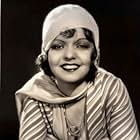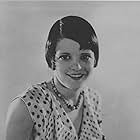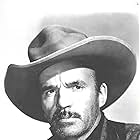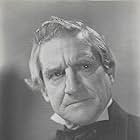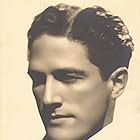Aggiungi una trama nella tua linguaTed is riding for Pa Martin against Cooper in the big race. When Cooper has his men capture Ted, Peggy overhears them and sets out to free Ted in time for the race.Ted is riding for Pa Martin against Cooper in the big race. When Cooper has his men capture Ted, Peggy overhears them and sets out to free Ted in time for the race.Ted is riding for Pa Martin against Cooper in the big race. When Cooper has his men capture Ted, Peggy overhears them and sets out to free Ted in time for the race.
Foto
Ida May Chadwick
- Jenny
- (non citato nei titoli originali)
Frank Clark
- Race Spectator
- (non citato nei titoli originali)
Rube Dalroy
- Man at Dance
- (non citato nei titoli originali)
Gordon De Main
- Rancher
- (non citato nei titoli originali)
Ethan Laidlaw
- Tex
- (non citato nei titoli originali)
Murdock MacQuarrie
- Cattle Rancher
- (non citato nei titoli originali)
Lew Meehan
- Denver
- (non citato nei titoli originali)
Al Norman
- Master of Ceremonies
- (non citato nei titoli originali)
Trama
Lo sapevi?
- QuizThe song "Deep Down South" was recorded by legendary jazz cornetist Bix Beiderbecke on September 9, 1930, in his last session as a bandleader. The record featured Benny Goodman on clarinet, Gene Krupa on drums and a high-voiced singer-guitarist named Weston Vaughan. Bix's record and the performance in this film were the only versions of "Deep Down South" recorded when it was new.
- Colonne sonoreDeep Down South
Lyrics by Monte Collins (as Monty Collins)
Music by George Green
Performed by Mona Ray with Abe Lyman and His Orchestra
Reprised as an instrumental by Abe Lyman and His Orchestra
Recensione in evidenza
Pardon My Gun is an example of how not to make a movie. Thinking about it in the context of 1930, the singing cowboy in movies was still developing, but the proper way to make a movie had been figured out for years. This movie was wrong in every way.
There is supposed to be a plot, but it is pushed aside for what would normally be filler. There is supposed to be a hero and a heroine, but they are pushed aside for what would normally be filler. Let me explain...
The plot is supposed to be about Ted Duncan (Tom Keene) saving Mary Martin (Sally Starr) from having to marry the villain, Cooper (Harry Woods), to settle her father's gambling debts. That is simple enough. The problem is that if I were to use a stopwatch to log the time Tom Keene is on screen it would probably total less than five minutes out of the hour long film. Heroines usually have little screen time, but Sally Starr could have filmed all of her dialogue in half an hour including set changes.
Pardon My Gun starts off kind of slow then works to a dead stop. The scene where Peggy (Mona Ray) arrives never seems to end. Peggy is a 20's flapper who would normally be out of place in a western, but this was hardly a western. The characters keep talking to one another, but nothing is said that pushes the story along. Watching Lightnin' (Stompie) talk to his frog, Fuzzy, over and over does nothing for the plot. The big barn dance scene takes a great deal of time with music, dance, and comedy performances. The redeeming value to the scene is that it gives a glimpse of what vaudeville acts were like. For what it was, it should have been left for film shorts rather than part of what should have been a movie. As much as we would like to have the hero on screen all the time, those scenes with playful interaction among the minor characters can add to the charm of the movie. In this case that is all there is! The charm wore off immediately.
Yes, there is an exciting horse race, a fight scene, some shots, and some cowboy hats. It would have been nice to have more than a few minutes of western action. The MacFarlane brothers apparently worked the rodeos because they did roping and singing for this movie in flashy western outfits. They are the closest thing to the wild west of anyone in the cast. Abe Lyman was popular on radio in the 1930's. Seeing his band in cowboy outfits is fun, but hardly western in the context of music for cowboy movies.
I have seen silent movies with much more cohesive stories than Pardon My Gun. I have seen early Bob Steele and Ken Maynard films with much more heroic action. There were better films made before, during, and of course, after the time Pardon My Gun was made. I am certain that movie-goers of 1930 felt the same way.
There is supposed to be a plot, but it is pushed aside for what would normally be filler. There is supposed to be a hero and a heroine, but they are pushed aside for what would normally be filler. Let me explain...
The plot is supposed to be about Ted Duncan (Tom Keene) saving Mary Martin (Sally Starr) from having to marry the villain, Cooper (Harry Woods), to settle her father's gambling debts. That is simple enough. The problem is that if I were to use a stopwatch to log the time Tom Keene is on screen it would probably total less than five minutes out of the hour long film. Heroines usually have little screen time, but Sally Starr could have filmed all of her dialogue in half an hour including set changes.
Pardon My Gun starts off kind of slow then works to a dead stop. The scene where Peggy (Mona Ray) arrives never seems to end. Peggy is a 20's flapper who would normally be out of place in a western, but this was hardly a western. The characters keep talking to one another, but nothing is said that pushes the story along. Watching Lightnin' (Stompie) talk to his frog, Fuzzy, over and over does nothing for the plot. The big barn dance scene takes a great deal of time with music, dance, and comedy performances. The redeeming value to the scene is that it gives a glimpse of what vaudeville acts were like. For what it was, it should have been left for film shorts rather than part of what should have been a movie. As much as we would like to have the hero on screen all the time, those scenes with playful interaction among the minor characters can add to the charm of the movie. In this case that is all there is! The charm wore off immediately.
Yes, there is an exciting horse race, a fight scene, some shots, and some cowboy hats. It would have been nice to have more than a few minutes of western action. The MacFarlane brothers apparently worked the rodeos because they did roping and singing for this movie in flashy western outfits. They are the closest thing to the wild west of anyone in the cast. Abe Lyman was popular on radio in the 1930's. Seeing his band in cowboy outfits is fun, but hardly western in the context of music for cowboy movies.
I have seen silent movies with much more cohesive stories than Pardon My Gun. I have seen early Bob Steele and Ken Maynard films with much more heroic action. There were better films made before, during, and of course, after the time Pardon My Gun was made. I am certain that movie-goers of 1930 felt the same way.
- stevehaynie
- 26 mar 2005
- Permalink
I più visti
Accedi per valutare e creare un elenco di titoli salvati per ottenere consigli personalizzati
Dettagli
- Tempo di esecuzione1 ora 7 minuti
- Colore
Contribuisci a questa pagina
Suggerisci una modifica o aggiungi i contenuti mancanti

Divario superiore
By what name was Pardon My Gun (1930) officially released in Canada in English?
Rispondi

